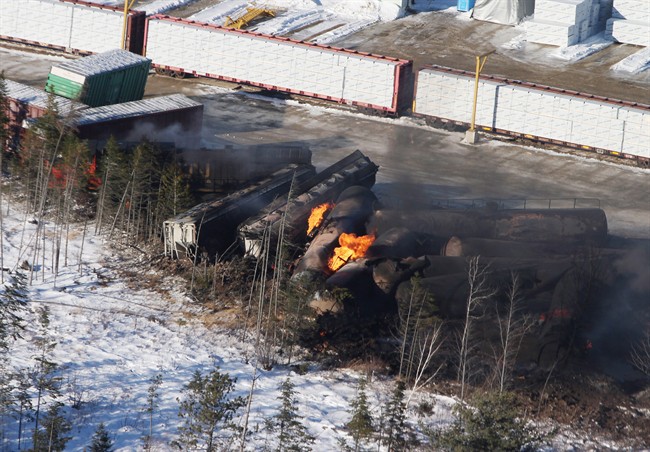In our story about the relative risks of different methods of transporting crude, we used a simple table.

Table: Accident rates for different modes of crude oil transportation

Source: Volumes from Statistics Canada, Transport Canada. Accident counts from Transport Canada for rail and truck, provincial governments and NEB for pipeline. Volumes estimated using crude oil density of 0.9 kg/l. There were no in-transit rail accidents in 2011, therefore 2012 data is used for comparison. Pipeline volume includes some diluent.
Putting that table together was not so simple.
Number of accidents
We got the number of truck and train accidents involving crude oil from a database of dangerous goods incidents from Transport Canada. Because we wanted to compare them to pipelines, we thought it best to only count accidents that occurred in transit – not at a loading or unloading facility. Because there were no such trains accidents in the data in 2011, we used 2012 data.
It is possible that the real number of accidents is a bit higher. This is because Transport Canada only requires companies to report spills of 200 litres or more. There are other “non-reportable” incidents involving smaller amounts in the table, which we included because we thought it was a closer reflection of the true number of accidents.
Pipelines presented their own issues. While the National Energy Board website lists pipeline spills, the NEB only regulates pipelines that cross provincial or national borders. Alberta’s energy regulator, for example, regulates some 400,000 kilometres of pipeline within the province. Other provinces have their own pipelines as well.
So we contacted every province individually to find their numbers on crude pipeline spills and added them together. For Alberta, we used the energy regulator’s data, obtained for a previous story.
There are some differences in reporting as well. In Alberta, companies are required to report any spill from a pipeline, no matter the volume. The National Energy Board only requires companies to report spills of greater than 1,500 litres, or smaller ones that could have a “significant adverse effect on the environment.”
To try to keep reporting requirements more closely matched, we used NEB data obtained from CBC which showed a number of unreported releases of smaller volumes of crude in 2011. It is possible there were other spills on NEB-regulated pipelines that were not reported because they are not required to be.
Volume shipped
We wanted to know how much crude oil is being shipped, and how, across Canada. Finding out was tough.
Although Transport Canada does have information on the amount of crude oil shipped by rail, they stopped tracking the amount shipped by truck in 2010.
Statistics Canada obtains similar information through an annual survey of trucking companies, in which they ask a number of companies what goods they carried and how much. Because of the nature of the survey, Statistics Canada actually recommends averaging the amounts over three years.
Alberta’s energy regulator tracks individual pipeline volumes, but was hesitant to provide a total, worried about double-counting. British Columbia doesn’t seem to have any information on volumes.
Fortunately, Statistics Canada keeps track of the amount shipped through pipelines on a national level, and gets the data directly from oil companies. Their data isn’t perfect, however; it includes an unknown volume of diluent, used to dilute heavy oilsands oil so that it can flow through a pipe.
It’s also worth mentioning that Transport Canada and Statistics Canada keep track of the amount of crude transported by truck and rail in kilograms, while pipeline amounts are tracked in cubic metres or other liquid measurements. For consistency we converted everything to cubic metres using a density for crude oil of 0.9 kg/l, which represents a fairly heavy crude.
So, for a single table, Global News had to draw upon eight different sources, since no one body held all the information. As governments decide how best to move Canadian oil, they too, will likely have to dig for their information.
Tally:
- Number of tables – 1
- Federal departments/agencies contacted – 3
- Provincial bodies contacted – 5



Comments